Could your child be the future Slash? Jimi Hendrix? Steve Vai? Absolutely! But how do you choose the right guitar for your child?
Childhood is the perfect time to begin learning an instrument, and many of the most celebrated guitarists started at a young age. In fact, it’s well documented that children can pick up new skills much faster than adults, so the sooner a child starts, the better!
Unless you’re a guitarist already, it can seem like a minefield trying to choose an instrument in the sea of sheer choice out there.
Luckily, you’ve come to the right place. This children’s guitar buying guide will help you navigate to the perfect model for your child.
Acoustic or electric?
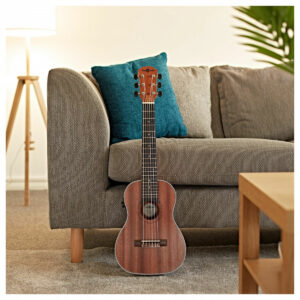 The first question you’ll want to ask is this:
The first question you’ll want to ask is this:
“Does my child want to be a rock god or a singer/songwriter aficionado?”
Choose carefully, as the answer may come to define their music career.
Kids’ acoustic guitars are a good starting point as you don’t need anything else (except maybe a guitar pick) to begin.
However, electric guitars are slightly easier to play for beginners, as the strings require less finger strength to press down, but they need an amplifier and instrument cable.
Here’s a quick breakdown of each guitar type…
Children’s acoustic guitars
These guitars are made almost solely from wood and emit a nice, organic sound.
They’re perfect for a huge variety of genres, including:
- Pop (think Ed Sheeran)
- Folk
- Fingerstyle
- Classical (classical guitars are slightly different)
The nature of their sound, often referred to as the ‘tone’, comes from the wood they are made of.
If your child is a singer/songwriter in the making, one of these fine instruments will be perfect as they’re easy to sing along with (after a bit of practice).
Children’s electric guitars
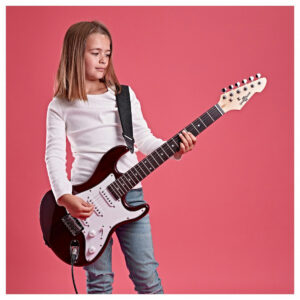 The louder and more dynamic counterpart of the humble acoustic.
The louder and more dynamic counterpart of the humble acoustic.
Electric guitars are perfect for genres such as:
- Rock
- Metal
- Blues
They’re also made of wood, but unlike acoustics, most of their tone comes from the amplifier they’re plugged into.
This is a speaker which has controls (such as volume and EQ) that allow you to adjust your sound and even add gain/distortion (an effect used predominantly for rock and metal).
If you can see your child playing awesome guitar solos and really rocking out, this is the instrument for them.
Ukuleles
It’s worth giving an honourable mention to another stringed instrument while you’re here which may pique your child’s interest. Ukuleles are really small and usually have only four strings, so they’re generally much easier to handle than guitars. They have a light, bright tone and their nylon strings are very easy to press down.
However, they do sound very different from guitars, so if your child has their heart set on six strings, you may want to avoid ukuleles.
Once you know which instrument type will best suit your little musician, you can start narrowing down your options to find their perfect guitar.
Sizing up your options
They say size matters not, but it does if you’re tiny and not very good at holding things. If your child is fairly young (under 12), you should look at smaller guitars – many manufacturers offer 1/4, 1/2, 3/4, and 7/8 sizes which will be much easier to handle than a full-sized guitar.
If you have a teenager (poor you) then you’ll most likely want to look into full-sized guitars. However, this rule isn’t set in stone, and the most important thing is that they find it comfortable to hold and play.
Which brands are best?
There’s no one perfect guitar for kids. Different brands have different attributes which you’ll want to look into before buying.
Take a look at what some of the most popular brands have to offer:
Electric guitars
Squier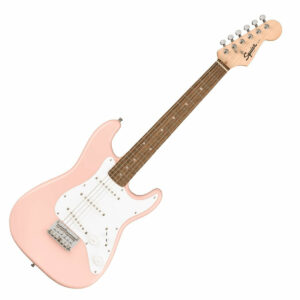 make guitars with very distinctive electric guitar shapes, based on genuine Fender models (they’re owned by Fender).
make guitars with very distinctive electric guitar shapes, based on genuine Fender models (they’re owned by Fender).
You may have heard of the Stratocaster or Telecaster – but if you haven’t, just know that they’re some of the most well-known guitars in the world.
They do a number of 3/4 size models which are perfect for kids.
Gear4music LA and New Jersey guitars are more great electric guitar choices for budding youngsters.
We have lots of starter packs for kids, which include a guitar, amp, gigbag, and strap, so your child can have everything they need, straight out of the box. They’re also affordable, so you don’t have to break the bank.
Epiphone are another massively popular manufacturer that offer some seriously high-quality children’s guitars. Owned by Gibson, they make guitars which are perfect for rock and hard rock, like the Les Paul Special Satin E1.
Acoustic guitars
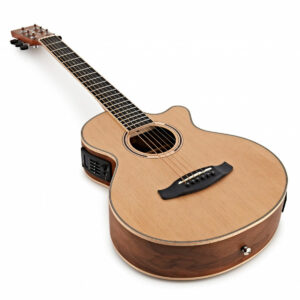 Fender, as I’m sure you’re aware, are one of the biggest guitar brands out there – and for good reason. They’re most famous for making electrics, but they also build some quality acoustics. It’s well worth taking a look at what they have to offer, as you’re pretty much guaranteed a high-quality instrument.
Fender, as I’m sure you’re aware, are one of the biggest guitar brands out there – and for good reason. They’re most famous for making electrics, but they also build some quality acoustics. It’s well worth taking a look at what they have to offer, as you’re pretty much guaranteed a high-quality instrument.
Classical guitars are a hugely popular option for beginners, largely because their nylon strings are much easier to press down.
Cordoba make some superb models, like the C1M, which are perfect for exploring that delicate classical tone. These guitars are very dynamic and suited to more than just classical music – although they are, of course, great for that too!
Electro acoustics offer all the same woody resonance as regular acoustics, but can also be plugged into an amp to make them louder. They have electronics built in that preserve the natural acoustic tone we all know and love.
Tanglewood, in particular, do some great models, like the DBTTCEBW Travel Super Folk Electro Acoustic.
Choosing the right brand is important, and the above list is by no means exhaustive. Try to set your price range and then have a look at the guitars each brand has to offer within that this. You’re sure to find a few models which stand out, so you can start to really narrow down your options.
Try before you buy
One of the best ways to know which guitar is right for your child is to get them to try it in a store. This way, you can see how comfortable they are holding it, and whether they like the general look and feel.
Once you’ve narrowed down your options using the methods above, you’ll be able to go straight in and ask to try your desired guitars. You’ll get a good look at which will work best.
And don’t worry about needing to be able to play anything, you’re really looking out for the one which makes your child’s eyes light up when they hold it.
Awesome accessories to consider
So, you’ve found the perfect guitar, is there anything else you need? That depends very much on what you’ve chosen!
If you’ve gone with a guitar starter pack, then you should have everything you need straight out of the box.
If you’ve bought a guitar on its own, there may be a few small accessories you wish to consider before your child gets started (they’ll probably ask for them later down the line anyway). Some of these may not be included in a starter pack either.
On a side note, they can be great stocking fillers!
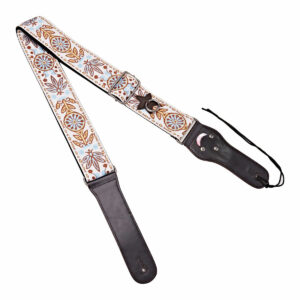 Tuners: A guitarist’s best friend. Tuners are essential to helping a guitar sound the way it should. After all, a guitar which is out of tune is in danger of sounding like a strangled cat. Luckily, there are plenty of affordable tuners on the market which are really intuitive. All your child needs to do is tune each sting to the correct note using the tuning pegs on the headstock (standard tuning is EADGBE) and they’ll be ready to rock.
Tuners: A guitarist’s best friend. Tuners are essential to helping a guitar sound the way it should. After all, a guitar which is out of tune is in danger of sounding like a strangled cat. Luckily, there are plenty of affordable tuners on the market which are really intuitive. All your child needs to do is tune each sting to the correct note using the tuning pegs on the headstock (standard tuning is EADGBE) and they’ll be ready to rock.
- Straps: Ahh yes, the humble guitar strap. Where would performing musicians be without this handy accessory? Guitar straps let you stand up whilst playing, and, let’s face it, who can look like a rock star sitting down? They are also a good chance to add a bit of colour to your child’s guitar, with loads of different patterns and materials also available.
- Strap locks: Talking about straps leads nicely on to another wonderful invention: strap locks! These are by no means essential, but some straps can be prone to slipping off the guitar and no one wants that! They lock the strap in place, eliminating any slipping and twisting, and ensuring the guitar won’t have a nasty fall. Schaller make some of the sturdiest and most popular strap locks, but there are plenty of options.
- Pick: A pick is not essential to playing guitar – especially if your child is interested in classical or fingerstyle. However, most modern players do use a pick, especially for electric guitars and genres like rock, metal, and blues. Also known as a plectrum, these are small, triangular-shaped objects which guitarists use to hit the strings – and they produce more volume and punch.
- Strings: They make the world go ’round. Well, that might be a bit of a stretch, but they do help guitars make noise. Strings will need replacing eventually, and some guitarists (especially professionals) have even been known to replace them every month, or even every couple of weeks (it all depends on how much the guitar is played).
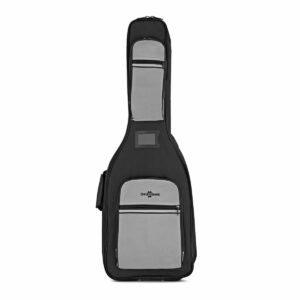 Pedals: There’s no need to invest in effects pedals straight away, but further down the line your child may want to start exploring some new sounds with their electric guitar. These little boxes add an effect (like reverb, delay, distortion, and lots more) to the amp’s sound, and are used extensively by artists across the world.
Pedals: There’s no need to invest in effects pedals straight away, but further down the line your child may want to start exploring some new sounds with their electric guitar. These little boxes add an effect (like reverb, delay, distortion, and lots more) to the amp’s sound, and are used extensively by artists across the world.
- Gigbag: If your child starts playing in a band or even if they start having lessons away from home, they’ll need a gigbag to transport their instrument. These usually come with carry handles, shoulder straps, and front pockets for any small accessories.
Remember that if you’ve bought an electric guitar on its own, you’ll also want to invest in an amplifier and instrument cable to get the proper sound out of the instrument.
Final thoughts
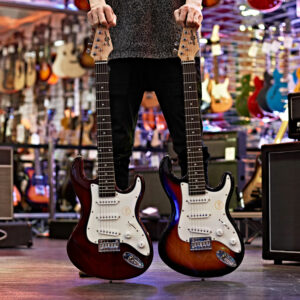 Buying a kid’s guitar is no mean feat, and it takes a little time to choose the right one. However, the rewards are well worth it – think of the years of happiness they can get from playing and making music.
Buying a kid’s guitar is no mean feat, and it takes a little time to choose the right one. However, the rewards are well worth it – think of the years of happiness they can get from playing and making music.
Depending on how your child learns best, it may be worth looking at some educational materials to get them started – especially for classical playing. However, this is the 21st century, and there are plenty of great instructional videos on YouTube which can really get them off to a good start – and even see them through their entire musical journey.
Justin Sandercoe’s Finger Gym exercise is a great place to begin, as it helps build the necessary finger strength to play, well, anything!
So, it’s time to prepare your ears, because the first few weeks of guitar learning might be… difficult. But once your child has learned the ropes, you could be in for a treat. So, I wish them all the best on their guitar-playing journey, and hope that you, too, will be enjoying their music very soon!
One instrument not mentioned above is the almighty bass guitar. Although a slightly different instrument (it sounds much lower), the bass guitar is equally as fun to play, and essential in any band. Some great beginner models are offered by the likes of Ibanez, Squier, and Yamaha.


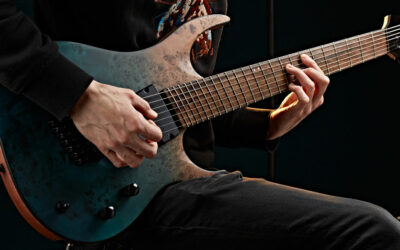
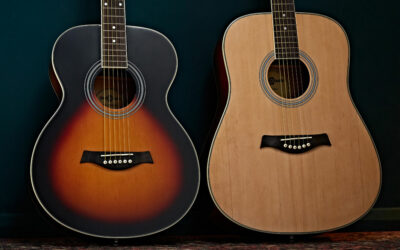

0 Comments